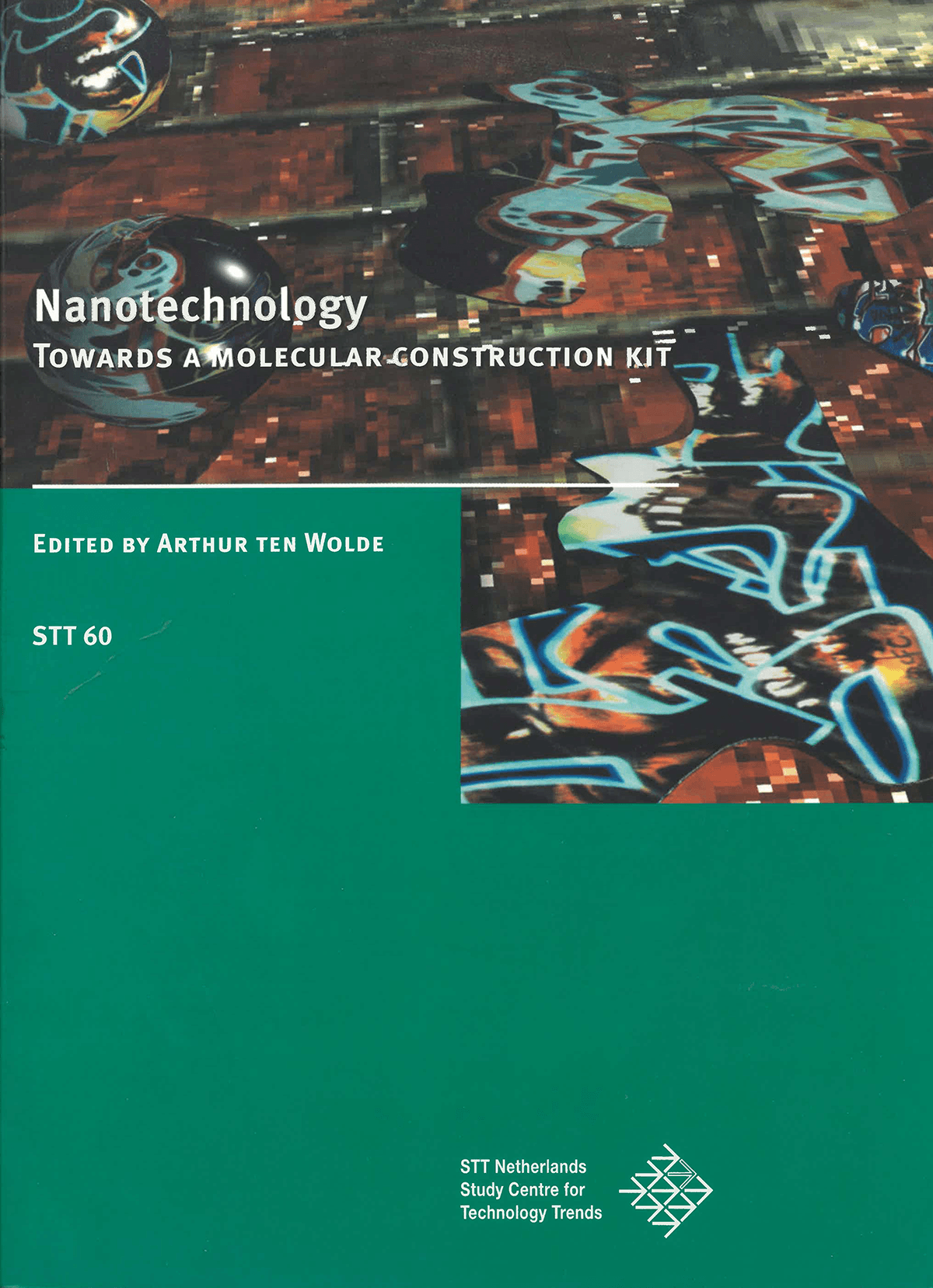Nanotechnology
Nanotechnology is considered a key technology for the 21st century by renowned scientists. But what exactly is nanotechnology? What is the difference between 'bottom-up' and 'top-down' nanofabrication, and what is a scanning probe microscope? And most of all: what will nanotechnology bring us?
Bottom up!
A previous publication of the Netherlands Study Center for Technology Trends (STT) ‘Microsystem technology: exploring opportunities’ (1994) argued that the miniaturization of electromechanical systems combined with several conventional physical and chemical technologies offers major opportunities for new products and processes. And indeed it does! Now, only a few years later, the size of experimentally manufactured microstructures is becoming so extremely small that a fundamental limit becomes relevant: the size of a single atom. Nanotechnology is concerned with manufacturing on the scale of molecules and atoms, a thousand times smaller than microsystems! This may lead to fundamentally new properties of materials. Over the next two decades, continued top-down mini-micro-nanoaturization will therefore result in even more (a thousand times more?) opportunities in information technology hardware: the chip of the 21st century is a nanochip. However, making things smaller and smaller is a path that becomes increasingly difficult to follow, full of potholes and roadblocks. The question then arises whether in the distant future, it might be feasible to construct a chip bottom-up from individual atoms and molecules using some kind of ‘molecular construction kit’.
Believe it or not, such a construction kit is under development. Chemists are capable of synthesizing nanoparticles, ‘large’ and complex molecules, and assemblies from these molecules. These are the building blocks for future manufacturing. Physicists have developed needle devices that can move and sense individual atoms. Together with advanced synthesis, these are to be the tools of future manufacturing. Biologists are learning rapidly how nature accomplishes a variety of astonishing feats, such as growing a molecular motor that propels a bacterium through the water. The combination of such knowledge with the novel tools and building blocks fuels a new manufacturing technology that surpasses both information technology and biotechnology. Nanotechnology is building nature’s way. A completely new manufacturing approach could evolve. To this vision of future manufacturing I raise my glass and say: Bottom up!
Thanks to the enthusiasm of a large number of experts from the world of research and industry, both in the Netherlands, Flanders and abroad, STT has succeeded in surveying the most important fields of nanoscale science and technology today. It draws a picture of what the technology can offer us in the future and what needs to be done. The book is thus a good starting-point for building an acquaintance with these developments in the field of nanotechnology and gaining insight into the opportunities that it can offer. I hope it will generate ideas which will ultimately contribute to sustainable economic development.
Ir.drs. H.N.J. Smits
Member of the Executive Board of Rabobank Nederland
Chairman of STT
The Netherlands
Omslag van de publicatie
-
